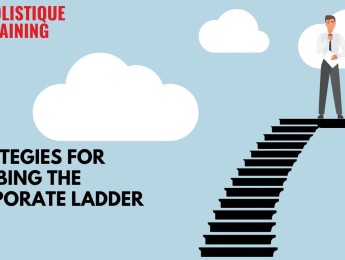- Table of Contents
- Introduction
- What Is a Balanced Scorecard?
- Why Is the Balanced Scorecard Important?
- Holistic View of Performance
- Alignment and Integration
- Early Warning System
- Strategic Decision-Making
- Facilitating Continuous Improvement
- How Is the Balanced Scorecard Different from Traditional Performance Measurement Methods?
- 1. Holistic View
- 2. Non-Financial Measures
- 3. Strategy Alignment
- 4. Forward-Looking Indicators
- 5. Communication and Collaboration
- How Do You Use a Balanced Scorecard?
- Define strategic objectives
- Develop key performance indicators (KPIs)
- Establish targets and benchmarks
- Monitor and track performance
- Take corrective actions
- What Are Strategic Objectives?
- What About Cascading?
- Technology Integration and Automation
- 1. Improved Data Accuracy
- 2. Real-time Monitoring
- 3. Enhanced Analytical Capabilities
- 4. Increased Efficiency
- 5. Better Decision-Making
- Implementation Challenges and Considerations
- Conclusion
Introduction
Achieving strategic success in today's ever-evolving business landscape requires a multifaceted approach to performance management. As organisations navigate the complexities of the modern marketplace, traditional metrics and financial measures alone fall short of providing a comprehensive view of their performance. This is where the Balanced Scorecard approach comes into play. Developed by Robert Kaplan and David Norton, the Balanced Scorecard offers a strategic management tool that goes beyond financial indicators and incorporates a range of perspectives to evaluate organisational performance. In this blog post, we will delve into the concept of the Balanced Scorecard, explore its significance, discuss effective utilisation, and provide real-world examples that highlight its practical application. By understanding the power of the Balanced Scorecard and its role in driving strategic alignment and performance improvement, organisations can enhance their decision-making processes and position themselves for long-term success.
What Is a Balanced Scorecard?
The Balanced Scorecard (BSC) is a strategic performance measurement framework that goes beyond traditional financial metrics and considers broader indicators to assess an organisation's performance. Developed by Robert Kaplan and David Norton in the early 1990s, the BSC recognises that financial measures alone cannot provide a complete picture of an organisation's health and long-term success.
The BSC incorporates four interrelated perspectives to assess performance: the financial perspective, the customer perspective, the internal process perspective, and the learning and growth perspective. By examining these perspectives in a balanced manner, organisations can gain valuable insights into the effectiveness of their strategies and make data-driven decisions.
Why Is the Balanced Scorecard Important?
The importance of the Balanced Scorecard (BSC) cannot be overstated in the context of modern strategic management. Let’s delve deeper into the significance of this approach:
Holistic View of Performance
Traditional performance metrics often focus narrowly on financial outcomes, such as revenue and profit margins. However, the Balanced Scorecard takes a more holistic approach by incorporating four interconnected perspectives—financial, customer, internal processes, and learning and growth. This broader view provides a comprehensive understanding of an organisation's performance, ensuring no critical aspect is overlooked.
For example, a company solely fixated on financial metrics might miss underlying issues affecting customer satisfaction or internal processes. The BSC acts as a compass, guiding organisations to assess their performance from various angles, thereby fostering a more complete and nuanced understanding.
Alignment and Integration
One of the balanced scorecard's core strengths is its ability to align strategic objectives across different departments or units within an organisation. This alignment is crucial for effective communication and coordination, creating a shared language and framework for discussions about performance, goals, and initiatives.
By promoting integration, the BSC ensures that individual efforts contribute cohesively to overarching organisational goals. This enhances collaboration and facilitates a shared understanding of the organisation's vision and priorities. Consequently, the Balanced Scorecard becomes a powerful catalyst for breaking down silos and fostering a more interconnected and synergistic organisational culture.
Early Warning System
Incorporating leading and lagging indicators, the BSC is an early warning system for potential issues. Traditional performance measurement methods often rely solely on historical financial data, providing a retrospective view of the organisation's health. The Balanced Scorecard, however, includes forward-looking indicators that offer insights into future performance trends.
By proactively understanding potential challenges, organisations can take timely corrective actions. This foresight is invaluable in a rapidly changing business environment, enabling organisations to adapt and thrive amidst uncertainties.
Strategic Decision-Making
The Balanced Scorecard is a strategic management tool that goes beyond being a mere performance measurement system. It becomes a cornerstone for strategic decision-making by providing a comprehensive and real-time view of the organisation's performance. This strategic insight is crucial for adapting to market changes, seizing opportunities, and mitigating risks.
Armed with data from diverse perspectives, decision-makers can make informed choices that align with the organisation's overarching strategy. This strategic alignment is beneficial for day-to-day operations and navigating long-term objectives and staying resilient in the face of evolving market dynamics.
Facilitating Continuous Improvement
The BSC is not a static tool but a dynamic framework that promotes continuous improvement. By regularly monitoring and tracking performance against established KPIs and targets, organisations can identify areas for enhancement and innovation. The emphasis on learning and growth in the BSC encourages a culture of adaptability and continuous learning.
Continuous improvement, driven by insights from the Balanced Scorecard, enables organisations to stay agile and responsive in a rapidly changing business landscape. This adaptability is a key factor in ensuring long-term success and sustainability.
In short, the Balanced Scorecard is not just a measurement tool; it is a strategic enabler that empowers organisations to navigate complexities, align objectives, anticipate challenges, make informed decisions, and foster a culture of continuous improvement. Its importance lies in its ability to provide a nuanced and multifaceted understanding of performance, making it an invaluable asset for organisations striving for enduring success in today's competitive and dynamic business environment.
How Is the Balanced Scorecard Different from Traditional Performance Measurement Methods?
Traditional performance measurement methods have primarily focused on financial metrics as the primary indicator of organisational success. While financial measures are important, they provide a limited view of an organisation's performance. On the other hand, the Balanced Scorecard approach offers a more comprehensive and balanced perspective by incorporating multiple dimensions of performance. Let's explore some key differences between the Balanced Scorecard approach and traditional performance measurement methods:
1. Holistic View
Traditional methods often emphasise financial outcomes, such as revenue and profit margins. This narrow focus, while essential, provides an incomplete view of an organisation's overall performance. In contrast, the Balanced Scorecard takes a holistic approach, integrating four interconnected perspectives—financial, customer, internal processes, and learning and growth. This comprehensive view ensures that organisations don't overlook critical non-financial factors, providing a more nuanced understanding of their health and success.
Consider a scenario where a company solely relies on financial metrics. While it may excel in profitability, it might be blind to customer dissatisfaction or internal inefficiencies. By incorporating various dimensions, the BSC acts as a compass guiding organisations toward a more balanced and thorough evaluation.
2. Non-Financial Measures
Traditional performance measurement methods often neglect non-financial measures that are pivotal for long-term success. The Balanced Scorecard recognises the significance of factors such as customer satisfaction, employee development, and operational efficiency. By including non-financial metrics, organisations can measure and manage crucial aspects alongside traditional financial indicators.
For instance, customer satisfaction ratings or employee turnover rates are integral to performance evaluation. This holistic inclusion allows organisations to address issues that might not be immediately apparent through financial data alone, fostering a more robust and resilient operational environment.
3. Strategy Alignment
Traditional methods may struggle to align individual goals and initiatives with broader organisational strategy effectively. The Balanced Scorecard, however, ensures strategic alignment by cascading objectives throughout the organisation. This cascading process involves linking high-level strategic goals to individual performance goals, fostering a shared understanding of strategic priorities.
The BSC promotes coherence and unity in organisational efforts by aligning objectives at every level. This alignment is crucial for ensuring that individual actions contribute meaningfully to overarching strategic objectives, reducing the risk of disjointed efforts that can impede overall progress.
4. Forward-Looking Indicators
While traditional methods often focus on lagging indicators, such as financial results from the past, the Balanced Scorecard incorporates both lagging and leading indicators. Lagging indicators provide a retrospective view, while leading indicators offer insights into future performance. This forward-looking perspective equips organisations with the ability to shape their future success proactively.
For example, organisations can anticipate future challenges and opportunities by incorporating leading indicators like customer retention rates or employee training hours. This foresight enables timely interventions and adjustments to strategies, fostering a proactive rather than reactive organisational culture.
5. Communication and Collaboration
Traditional methods may lack a structured framework for effective communication and collaboration across an organisation's different levels and functions. The Balanced Scorecard addresses this gap by providing a common language and framework. This structured approach facilitates better coordination, alignment, and decision-making.
With the BSC, everyone within the organisation, from top-level executives to frontline employees, can speak the same strategic language. This commonality enhances communication, fosters collaboration, and ensures that everyone understands their role in contributing to the organisation's overall success.
In essence, the Balanced Scorecard represents a paradigm shift from the limitations of traditional performance measurement methods. It offers a more comprehensive, balanced, and dynamic approach that considers the multifaceted nature of organisational success, making it a strategic imperative for those aiming to thrive in today's dynamic business environment.
How Do You Use a Balanced Scorecard?
Implementing a Balanced Scorecard involves a structured approach that encompasses several key steps:
Define strategic objectives
Begin by identifying the strategic objectives—which we will discuss in depth in a minute—that align with your organisation's mission and vision. These objectives should be specific, measurable, achievable, relevant, and time-bound (SMART). Assign responsibility to relevant individuals or teams for each objective.
Develop key performance indicators (KPIs)
Once strategic objectives are defined, develop a set of KPIs for each perspective of the Balanced Scorecard. These indicators should provide meaningful performance measures and reflect progress towards achieving the strategic objectives. For example, customer satisfaction ratings, employee turnover rates, or process cycle times could serve as KPIs.
Establish targets and benchmarks
Set specific targets or benchmarks for each KPI to guide performance evaluation. These targets should be ambitious yet realistic, motivating employees and driving continuous improvement. Benchmarking against industry standards or best practices can provide valuable insights into areas for improvement.
Monitor and track performance
Monitor and track performance against the established KPIs and targets regularly. This requires collecting relevant data, analysing trends, and reporting progress to key stakeholders. Leveraging technology and data analytics can streamline this process, enabling real-time monitoring and providing actionable insights.
Take corrective actions
Identify performance gaps and take corrective actions when necessary. This may involve adjusting strategies, reallocating resources, or implementing process improvements. The Balanced Scorecard approach helps organisations detect issues early, enabling them to make timely interventions and improve overall performance.
What Are Strategic Objectives?
Strategic objectives are the fundamental goals that organisations aim to achieve to fulfil their mission and realise their vision. These objectives are typically derived from an organisation's strategic plan and are focused on creating long-term value. Strategic objectives are the building blocks of the Balanced Scorecard and represent the desired outcomes organisations strive for across various perspectives.
Strategic objectives should be aligned with the organisation's overall strategy and provide clear direction to employees. They are often categorised under each perspective of the Balanced Scorecard to ensure a comprehensive and balanced approach to performance measurement.
Perspective | Strategic Objectives |
Financial Perspective | Increase annual revenue by 15% through diversification. |
Customer Perspective | Achieve 90% customer satisfaction through personalised services. |
Internal Process Perspective | Streamline supply chain to reduce production costs by 20%. |
Learning & Growth Perspective | Enhance employee skills through a 30% increase in training hours. |
Innovation Perspective | Launch two new products to market within the year. |
Table 1: Examples of strategic objectives about each BSC perspective
What About Cascading?
Cascading is the process of translating high-level strategic objectives into actionable targets and initiatives at lower levels of the organisation. It ensures alignment and coherence throughout the organisation, from top-level strategic goals to individual employee objectives.
Organisations need to establish a clear line of sight between strategic objectives, KPIs, and individual performance goals to cascade the Balanced Scorecard. This process involves engaging employees at all levels, enabling them to understand and contribute to achieving strategic objectives. By cascading the Balanced Scorecard effectively, organisations create a sense of shared ownership and accountability, fostering a culture of continuous improvement and strategic alignment.
Technology Integration and Automation
In the contemporary business landscape, integrating technology and automation has become imperative for organisations aiming to stay competitive and agile. The Balanced Scorecard (BSC), a strategic performance measurement framework, is no exception to this trend. Leveraging technology in conjunction with the BSC streamlines the process and enhances the efficiency, accuracy, and overall effectiveness of performance management. Let's delve into how technology integration and automation enrich the implementation of the Balanced Scorecard:
1. Improved Data Accuracy
Manual data collection processes are not only time-consuming but also susceptible to errors. Technology integration automates data collection, significantly improving accuracy. By employing software solutions or integrated platforms, organisations can ensure that the data feeding into the Balanced Scorecard is consistent, reliable, and up-to-date.
This improved accuracy is a foundation for meaningful analysis, decision-making, and, ultimately, the successful execution of organisational strategies.
2. Real-time Monitoring
One key advantage of technology integration with the Balanced Scorecard is the ability to monitor performance in real time. Traditional methods may rely on periodic reports, delaying identifying emerging issues or opportunities. With technology, organisations can access real-time dashboards that provide up-to-the-minute insights into key performance indicators (KPIs) and overall strategic progress.
Real-time monitoring empowers decision-makers to respond promptly to changes, seize opportunities, and address challenges as they arise, contributing to a more agile and adaptive organisational culture.
3. Enhanced Analytical Capabilities
The volume and complexity of data involved in the Balanced Scorecard process can be overwhelming without advanced analytical capabilities. Technology integration allows organisations to leverage sophisticated analytics tools to gain deeper insights into performance trends, correlations, and predictive patterns.
Advanced analytics enable decision-makers to go beyond surface-level understanding, identifying the root causes of performance issues and uncovering opportunities for improvement. This depth of analysis contributes to more informed decision-making, driving strategic initiatives with precision.
4. Increased Efficiency
Automation of routine tasks associated with the Balanced Scorecard process significantly enhances overall efficiency. Tasks such as data collection, aggregation, and report generation, which may be time-consuming when done manually, can be automated through dedicated software solutions.
By reducing the time and effort spent on administrative tasks, organisations free up resources to focus on interpreting data, strategizing, and implementing corrective actions. This increased efficiency translates into a more effective and responsive approach to performance management.
5. Better Decision-Making
The integration of technology facilitates the collection and analysis of data and contributes to better decision-making. With real-time, accurate, and comprehensive insights provided by technology-driven solutions, decision-makers can make informed choices aligned with organizational objectives.
When powered by technology, the balanced scorecard becomes not just a retrospective tool but a forward-looking instrument that aids in anticipating trends and proactively shaping the organisation's future strategies.
Implementation Challenges and Considerations
While the benefits of technology integration and automation are substantial, organisations must navigate potential challenges:
1. Integration Complexity
Integrating technology with existing organisational systems and processes can be complex. Ensuring seamless compatibility and data flow between different tools and platforms requires careful planning and expertise.
2. Data Security Concerns
As technology handles sensitive organisational data, ensuring robust security measures is paramount. Organisations need to implement encryption, access controls, and regular security audits to safeguard against data breaches.
3. Employee Training
Implementing technology solutions often requires employees to adapt to new tools and processes. Comprehensive training programmes are essential to ensure that staff members can effectively use the technology to support the Balanced Scorecard process.
4. Cost Considerations
While technology integration can yield substantial returns on investment, upfront costs are associated with acquiring and implementing new systems. Organisations must weigh these costs against the long-term benefits and efficiencies gained.
By embracing technology, organisations unlock the full potential of the Balanced Scorecard, transforming it from a static measurement tool into a dynamic and adaptive framework. Technology integration paves the way for sustainable success in today's fast-paced business environment with improved data accuracy, real-time monitoring, enhanced analytical capabilities, increased efficiency, and better decision-making. While challenges exist, the benefits far outweigh them, making the marriage of technology and the Balanced Scorecard a strategic imperative for organisations aspiring to thrive in the digital age.
Conclusion
In today's fast-paced and complex business landscape, organisations need a comprehensive approach to performance management and strategy execution. The Balanced Scorecard offers a powerful framework that enables organisations to assess performance from multiple perspectives, align strategies, and drive continuous improvement. With 31% of companies reporting how helpful the balanced scorecard can be, there's no better time for your organisation to seize the full potential of the Balanced Scorecard approach. Elevate your strategic prowess and financial stability by enrolling now in our exclusive course, ‘Using a Balanced Scorecard for Financial Stability.’ Take charge of your organisation's success – contact us for more information and secure your spot today!
























